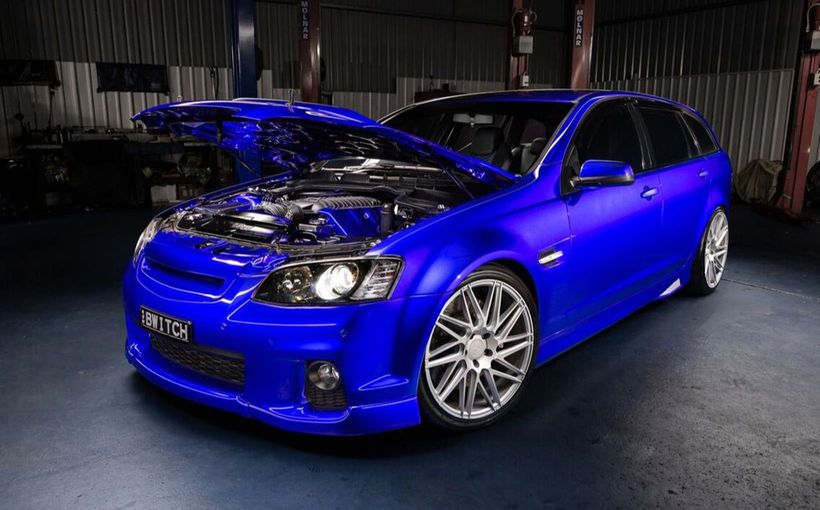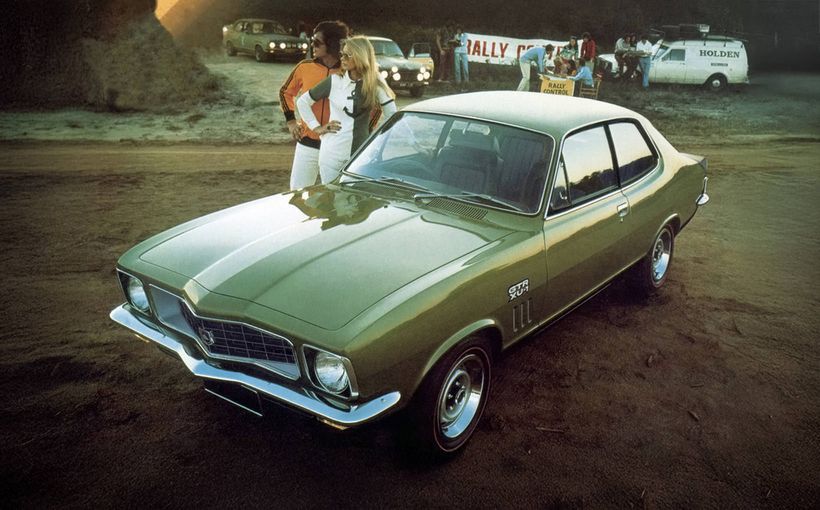Joe Schemansky: Torana GTR-X-and other design Icons

Joe Schemansky led the styling of some of Australia’s best loved and most iconic cars, including the Monaro, Statesman, LC and LH Torana and the HK and HQ Kingswoods.
It was during Joe’s tenure as design director at Holden that two of the company’s most famous concept cars were unveiled—the futurist 1969 Hurricane and the 1970 Torana GTR-X.
The Hurricane was never meant for production, being just an ideas car to showcase Holden’s technical and design prowess. And for those objectives it succeeded.


The GTR-X, on the other hand, was a serious project meant for release in February 1973. Three prototypes were built. One was an operable show car. Media and public reactions were exceptionally positive and Holden’s executives were keen to capitalise on the excitement and demand generated by the concept.
The concept’s brochure gave every indication that the project had been approved, declaring that the car is “designed with the thought of possible limited volume production.”
In a 1971 report to GM’s President, Mr E.M (Pete) Estes, a Group Vice President of GM in Detroit, Holden’s management team emphasised that they wanted to launch the car as early as possible to fight off imports, especially the Datsun 240Z.
To keep costs low, the GTR-X was to use existing Holden parts as much as possible.


Even though it had a 186 cubic inch (3 litre) six cylinder engine, the fibreglass bodied GTR-X was almost as fast as the Chevrolet Corvette, which boasted a V8 of almost double the six’s capacity.
The project was cancelled when senior management got cold feet about the profit (or lack of it) from the projected 1000-1500 annual sales projections.
If Joe was ever disappointed with the outcome of the GTR-X project he certainly never let it stand in the way of championing great looking cars. After all, by the time the GTR-X was being developed, he’d been with GM for over three decades and well understood that sometimes even the worthiest of projects never make onto the showroom floor, no matter how beautiful a car looks.
Joe was born in 1916 in Detroit. He graduated from the Detroit Art Academy and went to work at G&R McMillans, the city’s up market grocery and department store, in October 1936.
He was hired by GM’s Styling department, in February 1937, and went into the Oldsmobile studio.

One year later he was laid off for four months during an economic downturn. Joe was rehired in July 1938, working in the La Salle studio.
In October 1945 he was promoted to the role of Assistant Chief Designer at Pontiac. By January 1949 he was Chief Designer at Cadillac.
Nineteen fifty one saw him as Chevrolet’s Creative Designer, working on the interior of the first Corvette. He also worked on the 1955-57 Chevrolet.
In 1957 he was appointed Chief Designer for Pontiac and is co-credited with the studio chief, Paul Gillan, for creating Pontiac’s iconic split grille, first used on the 1959 models.

In early 1961 Bill Mitchell, GM’s global design boss, appointed him as Chief Designer for Body Design Co-Ordination, which gave him influence across all of the company’s studios.
Joe’s first association with Holden was in mid-1961 when he and Paul Gillian saw the prototype EJ Holden model in Detroit and suggested Bill Mitchell that it needed urgent refinements. That story, along with never-before-seen photos, has been comprehensively detailed in the February 2017 edition of Retroautos (here is a LINK) and in volume 4 of my Design to Driveway book series.

The EJ Holden, styled by Holden’s then chief stylist, Af Payze, was shaped in the late 1950s at a time when the influence of GM’s Vice President of Design, Harley Earl, was starting to decline.
Earl took a somewhat “hands off” approach to styling in GM’s subsidiaries Opel, Vauxhall and Holden. His focus was the USA. As covered in the FE Holden chapter in volume 3 of Design to Driveway, Earl relied on General Motors Overseas Operations’ (GMOO) executive Glen Smith to convey his design expectations to the various GM outposts beyond the USA.
This situation may have suited Earl, but Bill Mitchell, who succeeded Earl on January 1st, 1959, had very different ideas. He had a vision for globally consistent design across GM’ markets. This would impact Holden, Opel and Vauxhall in the early 1960s.
Mitchell was not someone to let an opportunity pass him by. To implement his vision of consistency, in 1961 he sent one of his top designers, Clare MacKichan, to Opel to establish and run their styling studios. He was also becoming very involved in Vauxhall’s styling decisions, visiting often.

Now it was Holden’s turn for some close attention and the EJ gave Mitchell the excuse to act. He decided that responsibility for Holden styling would transfer from Melbourne to Detroit. This meant that the 1963 EH and 1965 HD models would also be designed in the USA.
Holden’s Managing Director, Harlow Gage, and Alf Payze visited Detroit in January/February 1962 and no doubt had “discussions” with Mitchell about the changes.
The transfer of responsibility was not to be permanent. As a longer-term solution, Mitchell wanted one of his senior managers to lead Holden’s future design efforts and develop and coach Australian designers. Joe Schemansky would get that job.
During 1963 Joe was asked by Mitchell to visit Australia to assess the capabilities of the Holden design team and advise on the establishment of styling studios in the new Technical Centre in Melbourne. By this time, he was one of GM’s most trusted senior styling managers.
Joe was appointed Holden’s first design director on 1st April, 1964. Even before he’d packed up and left for Australia, Joe had commenced work on Holden’s HR model, in conjunction with Holden’s local design team. Using a minimum of subtle changes, he and the team gave the HR a smoother appearance than its HD predecessor. The changes boosted sales.
As soon as he had settled into his new job Joe commenced recruiting and developing highly talented Australian designers. The long-term impact of his recruitment project was that it opened up a pathway to international career opportunities for many Australia car designers.


Peter Nankervis was one of the young Australian designers to benefit from such an opportunity. In 1964 Joe selected him to go to GM’s Technical Centre headquarters for training.
“I was there from 1964 to April 1965,” Peter says. “Paul Gillan, who was a friend of Joe’s, was my ‘boss’ in the USA and he showed me around the GM Technical Centre when I first arrived. It was a revelation for me in terms of scale, output and the depth and breadth of talent GM had in its ranks of stylists.”
It also gave Peter an invaluable insight into the design direction that Bill Mitchell was taking the company and what the expectations were of young designers.
The HK/HT/HG range, including the Monaro coupe, was already under development when Joe arrived in Australia. In fact, he’d started the project in Detroit in early 1964.


Joe encouraged his newly appointed (American) Assistant Design Director, John Schinella, and the design team, to create a range of cars that took their surface shapes from GM’s upcoming “hero” models: the Oldsmobile Toronado and 1968 Pontiac GTO. The result were cars, especially the Monaro, that looked strong and as fresh and as exciting as anything of its era.
Another of Joe’s newly hired, young Australian designers, Phil Zmood, recalls that when Bill Mitchell visited Australia to sign off on the HK range he said “Holden has designed the best ‘little’ car outside of the USA.” Phil would go on to become Holden’s first Australian design director.


If I had to pick just one car from Joe’s design resume it would be the 1971 HQ Holden. He championed the shape of the car from design to driveway. The HQ is arguably the most elegant car ever styled in this country, particularly the Monaro coupe, which was largely shaped by Phil Zmood.
It was significant departure from the HK/HT/HG design, which had clearly defined corners and many flat, wide surfaces. The HQ’s surfaces were smooth and its corners rounded to the extent of almost fading away.


One of the stand out features of the HQ was its ultra-thin yet very strong front pillars. They were Phil Zmood’s idea and gave the car outstanding forward vision which has not been equalled since.
Phil was another young designer to benefit from Joe’s recruitment project. He joined Holden in 1965 at age 21, with a degree in automotive industrial design from the Royal Melbourne Institute of Technology. He was the first graduate in this field in Australia.

When he started at Holden Joe suggested he find a desk and start drawing cars. “I did that for eight weeks, and was then assigned to the HK program,” Phil says. “I worked on the Brougham with Joe.” Phil would later become Holden’s first Australia design director.
“Joe was a generous and nice guy,” Phil recalls. “He had a very flexible approach to work which was quite revolutionary back in those days.”
Phil says that Joe also encouraged American designers to come out to Australia to help expand the skills of the local team.

Leo Pruneau, who succeeded Joe in his design director role at Holden, told me that Joe was the “best boss I ever worked for.”
“He let me get on with things and gave advice and encouragement when needed,” Leo says.
Peter Nankervis recalls Joe “tended to guide us to a conclusion, rather than direct us what to do. He listened to people and did not often become involved in the detail work. This was at a time when we were doing an enormous amount of work on the Kingswood, Stateman, Monaro coupe and Torana models in the late 1960s and early 1970s. Joe let us young designers get on with it.”

Quoted in the June 1992 edition of Restored Cars magazine, Joe claimed, with a smile on his face, that his staff did everything. “I just walked around looking important, as though I knew what I was doing—they all believed me.”
He was too modest. Joe did what all smart leaders always do. He surrounded himself with talented people and let them get on with their jobs, giving advice and managing the expectations of stakeholders in the design process.
When Joe retired, he returned briefly to the USA, and then came back to live here. He died in 2004.









